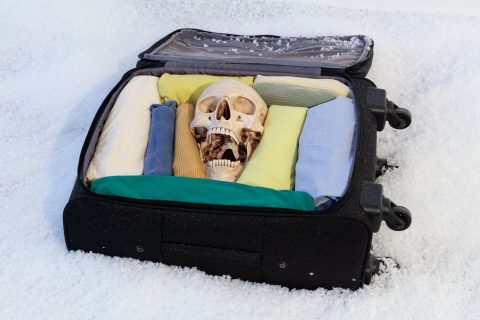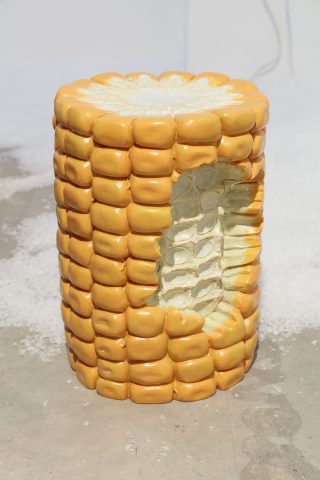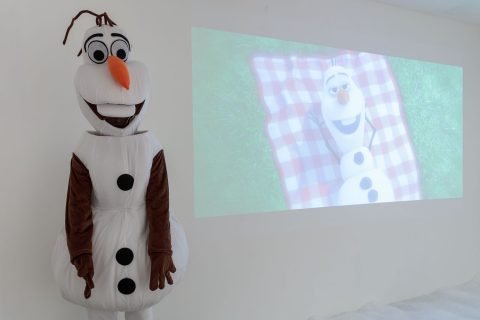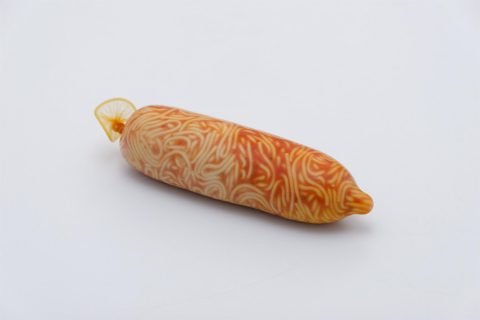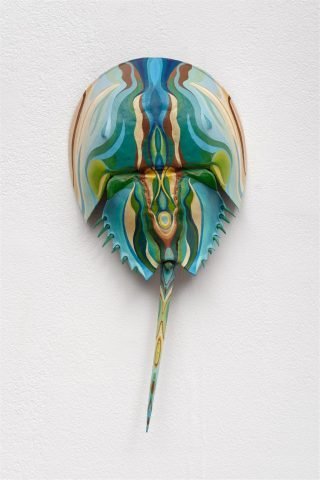Should we call it I, he or they? Puppies Puppies
Is Puppies Puppies the talent that the world of emerging art is waiting for? Unfortunately Marcel Duchamp is not here to answer this question.
- Puppies Puppies, Baggage (Carry On), 2015, artist and fiancé’s clothing, artificial skull and crossbones, artist’s carry on, suitcase, 55 x 66 x 19 cm, 21 5/8 x 26 x 7 1/2 ins. Courtesy of Wilma Gold.
- Puppies Puppies, Corn Stool 2015, Fiberglas, 28 x 39 cm, 11 1/8 x 15 3/8 ins. Courtesy of Wilma Gold.
- Frozen, 2015, Vilma Gold, London, Installation View. Courtesy of Wilma Gold.
- Puppies Puppies, Spaghetti Condom, 2016, Condom filled with spaghetti, 17 x 5 cm (6 3/4 x 2 in). Courtesy of Balice Hertling.
- Puppies Puppies, Untitled, 2016, oil on horseshoe crab exoskeleton, 38 x 22 x 20 cm (15 x 8 5/8 x 7 7/8 in). Courtesy of Balice Hertling.
- Puppies Puppies performing Love, Bob Esponja at the 2015 Material Art Fair. Image courtesy of the artist and Queer Thoughts.
Readymade has always upset people. Since its pioneer Duchamp showed an urinal in 1917, an existing object and a not existing maker are hard to digest. Last but not least in the league of Marcel’s followers, Puppies Puppies, a mystic persona shifting between “I”, “he” and “they”, is about to redefine the genre recently embraced both by the Post Internet generation and The Still House Group. All we know about the artist, who is a scene-stealer and dresses up like Gollum, or turn up at art fairs disguised as Sponge Bob, is that he was born in Texas not so long ago and suffered from an early brain tumor, a personal issue often resurfacing in his practice. Preserving such an enigmatic aura in the selfie hyperconnected century, it’s per se challenging as challenging is the type of work Puppies Puppies “create” and that can be traced back in the artist’s psychology, biography and personal love story.
Let’s start with saying that the artist doesn’t create anything and most of the objects is sourced elsewhere online or through supplies companies. Here comes a first difference from the master: while Duchamp was somehow detached emotionally from his creations, Puppies Puppies is fully involved with them. The artist’s approach reminds us of Ceal Floyer, Jimmy Durham, Marcel Broothers and Joseph Beuys, who “personalized” the readymade by taking distance from Duchamp and Post Internet’s objectification. Antibacterial dispensers scattered silently through the last Berlin Biennial remind the artist of his nurse mother and the time spent in hospitals due to his aforementioned health issue. The Green works (dishes, clothes, furniture, plants, sheets, etc.) were day-to-day objects used by the artist and his partner Forrest Nash (Contemporary Art Daily founder) in their apartment and included in the artist’s exhibition at What Pipeline gallery in Detroit (the show involved a marriage proposal too). Here comes another difference from Duchamp as while his readymade become iconic pieces to contemplate once removed and deprived from their original function, in this case works can be activated: dispensers can be used and dishes can be eaten on.
Puppies Puppies is about to “upset” the panorama by leaving behind a busy year and facing an increasing participation to art events in the upcoming one. He will take part of the next Whitney Biennial and, in January, his work will be included in a group show at James Fuentes while during MiArt, a solo show is planned to take place in Milan under Boatos Fine Art‘s wing (other galleries representing his work are Neue Alte Brucke, Balice Hertling and Queer Thoughts). Anna Bergamasco, BFA’s founder, says “Part of Puppies Puppies beauty relies in his destabilizing attitude”. When uniqueness, scarcity and preciousness are a collector main criteria to choose an acquisition, Puppies Puppies undermines the principle from the start with open editions and sourced online artworks (hardly ever signed). So let’s watch out for this secretive artist who pushes “wrongness” to a new and seductive frontier by mocking the rules and challenging common sense in a way that is never only cynical, but profoundly personal and ultimately, human.
August 31, 2017

